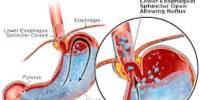Vitamins are necessary for the regulation of many metabolic and biologic activities in the human body. Overconsumption and prolonged use of pharmaceutical forms of both water-soluble and fat-soluble vitamins, on the other hand, may result in accumulation and toxicity. In cases of acute poisoning caused by vitamin supplements or drugs, immediate medical attention is required to detoxify the effects and restore organ function.
Hypervitaminosis is a condition characterized by abnormally high vitamin storage levels, which can result in symptoms such as excessive excitement, irritability, or even toxicity. Specific medical names for various conditions are derived from the vitamin involved: Hypervitaminosis A, for example, refers to an excess of vitamin A. Hypervitaminoses are primarily caused by fat-soluble vitamins (D and A), as these are stored by the body for longer than the water-soluble vitamins.
Many people take vitamin supplements on a daily basis, believing that excess vitamins will be excreted from the body. This misconception, as well as excessive vitamin consumption, may result in toxic effects or hypervitaminosis. A high intake of fortified foods can also lead to fat-soluble vitamin accumulation in the liver. Natural foods have not been linked to toxicity.
Toxic levels of vitamins are generally caused by excessive supplementation, which does not always come from natural sources, but rather from a combination of natural, derived vitamins and enhancers (vitamin boosters). Fat-soluble vitamin toxicity can also be caused by a high intake of fortified foods, but natural foods in modest amounts rarely deliver extreme or dangerous levels of fat-soluble vitamins. The Dietary Reference Intake recommendations from the United States Department of Agriculture define a “tolerable upper intake level” for most vitamins.
Hypervitaminosis A is caused by consuming an excessive amount of preformed vitamin A from foods for an extended period of time (fish oil, animal liver and kidney, and plant sources like carrots). Acute or chronic hypervitaminosis A Acute form is extremely rare, with symptoms including headache, vomiting, brief loss of consciousness, dizziness, irritability, nausea, abdominal pain, fever, skin rashes all over the body with no clear localization, and visual disturbances such as diplopia.
Hypervitaminosis D is caused by taking prescribed medications such as calcium and vitamin D for an extended period of time. Excessive sun exposure does not result in excessive vitamin D levels.
Vitamin E occurs naturally in vegetable oils, whole grains, nuts, and seeds. There have been no reports of negative side effects from consuming vitamin E in natural foods. Because of its known antioxidant, antiatherogenic, antisterility, and antiaging properties, people have been taking vitamin E supplements on a regular basis.
Vitamin overdose can be avoided in those who are completely healthy and do not suffer from long periods of avitaminosis by not taking more than the normal or recommended amount of multivitamin supplement shown on the bottle and not ingesting multiple vitamin-containing supplements concurrently.
Prevention
In healthy individuals who have not had any periods of avitaminosis or vitamin (vegetable) deficiency for at least two years, prevention is achieved by not taking more than the expected normal or recommended amount of vitamin supplements.
A doctor will perform a physical examination and ask about the patient’s symptoms to make a diagnosis. The doctor will also inquire about any vitamins or medications that the patient is taking. A blood test may also be recommended by the doctor to help them diagnose abnormally high vitamin A levels.
The severity of the vitamin A toxicity and how quickly it was treated determine recovery. Most people recover completely once they stop taking vitamin A supplements. For those who develop complications, such as kidney or liver damage, their outlook will depend on the severity of the damage.
















